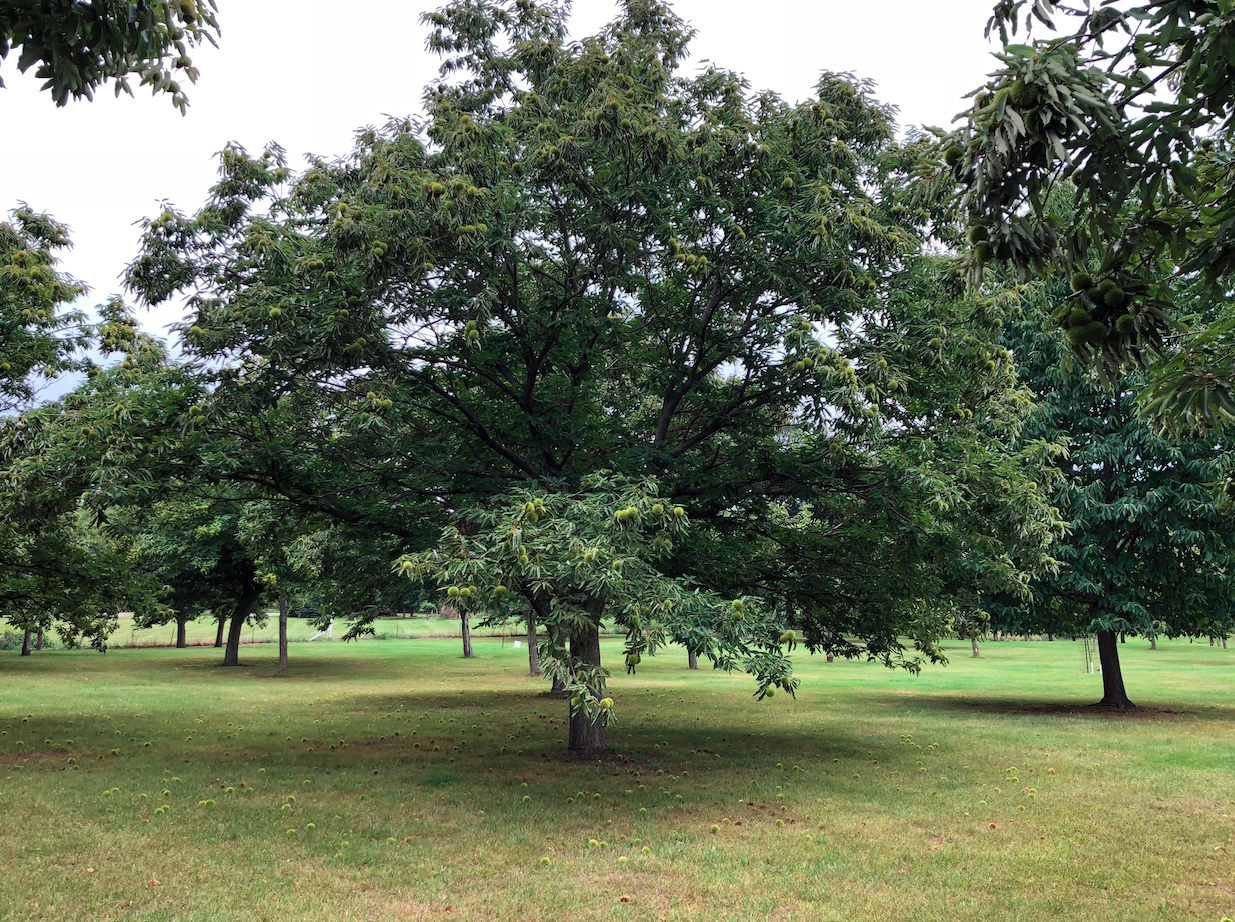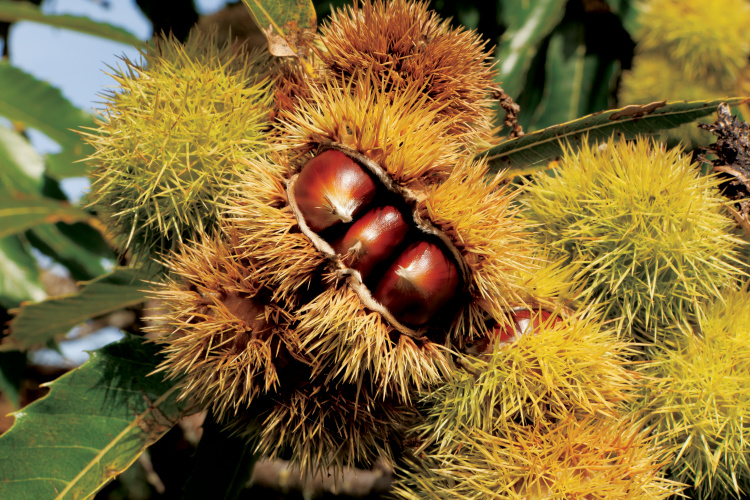Home > Farm > Environment > How Michigan Researchers are Saving the American Chestnut
How Michigan Researchers are Saving the American Chestnut
In partnership with: Michigan Department of Agriculture & Rural Development

Many people today typically associate chestnuts with the familiar tune about roasting them over an open fire. But before disease wiped out the majority of the chestnut tree population, the species ruled America’s eastern forests.
“American chestnuts used to dominate the Appalachian forest,” says Dennis Fulbright, professor emeritus at Michigan State University. “But in the early 20th century, a fungal disease called chestnut blight made its way through the country and destroyed 4 billion mature American chestnut trees.”
The Redwoods of the East
Before the chestnut blight, these trees blanketed 200 million acres of forests from Maine to Mississippi. The largest ever recorded measured 27 feet across the stump, earning them the nickname redwoods of the East. People used the trees for traditional purposes like lumber and firewood, but also stripped and soaked the bark to create tanning liquid for hides and leather. Not to mention, the trees produced delicious edible chestnuts.
The tree even had a tendency to sprout right back up from its roots, meaning farmers didn’t need to replant after chopping one down. A 400-year-old root could quickly push up several young trees to replace the old.
“I’m not sure our generation can truly understand how tied to a tree people could be,” Fulbright says. “The American chestnut was the tree that surpassed all others.”
The Fungus That Felled the Giants
The American chestnut was one of the first trees to experience severe population loss due to an invasive fungal species. Though many were eliminated, a few survived.
“Farmers planted these trees in Michigan from the 1880s to the early 1900s,” Fulbright says. “They knew how valuable the trees were in other states, so pioneers brought a few seedlings here to plant on their farms.”
Many of these same trees were still around when Fulbright arrived at Michigan State University in 1979.
“Several of these trees were obviously suffering from chestnut blight, but they weren’t dead,” Fulbright says. “We started asking ourselves why. Why weren’t these trees dying despite having the fungus? What did they have that other trees didn’t?”
Fulbright and a team of other researchers at the university pursued this question throughout the 1980s until they found their answer.
“We discovered a virus within the fungus that caused the fungus to weaken,” Fulbright says. “The trees that were still hanging on were theoretically being destroyed by the chestnut blight fungus, but the fungus was simultaneously being damaged by a virus.”

Reviving the American Chestnut
Empowered by the discovery, the team decided to see if they could use the virus to treat the remaining trees that weren’t so lucky to have the weakened form of the fungus.
“In some cases it worked, and in some cases it didn’t,” Fulbright says. The researchers used this method to attempt to save one of the final large chestnut stands in Wisconsin in the 1990s. They applied the virus to many of the 5,000 trees – and waited.
About 20 years later, they evaluated the stand and discovered they’d saved about half of the trees. Survivors remained in their original trunks and maintained their height.
“Ultimately, our Michigan studies helped us better understand how nature functions in managing plant diseases,” Fulbright says. “All we needed to do was uncover nature’s methods. This time it just so happened to be through management of a fungal pathogen with a virus.”
Birth of a New Industry
In addition to their integral role in the ongoing revival of the American chestnut, Michigan researchers are responsible for bringing back a thriving, albeit untraditional, chestnut industry.
“Despite the decline of the original trees, people still wanted chestnuts,” Fulbright says.
The team set up orchards, experimented with different species and their hybrids, and ultimately started growing chestnut trees that could meet the culinary demand.
Michigan’s present-day chestnut trees are similar to the original American chestnut with a few key differences – particularly their higher resistance to blight. So while these fabled trees may not dominate the eastern forests like they used to, their future looks brighter than ever.




I know of a tree in the national Forest around Cadillac michigan. This is the only one around so I assume somehow it survived the blight. To my horror when I went mushroom hunting this spring it had blown down last summer in a windstorm but there are many shoots coming out of the rip ball and I’m wondering if those can be used as a possible tree then maybe resistant to the blight. 231-878-7595 is my phone number I would love someone the propagates chestnuts to get a hold of some of these sprouts
Did you ever find someone who was willing to try and propagate these shoots? I’ve been hunting for months to try and find some American Chestnuts that could be propagated from, and would love to help bring these trees back!
I’m in KALAMAZOO. where can I get a baby tree to nurse along?
Marcia
I live in Kalamazoo near the Nature Center. I have 3 American Chestnut trees. I don’t know if we can get a sprout, but Im willing to try if you’re still interested.